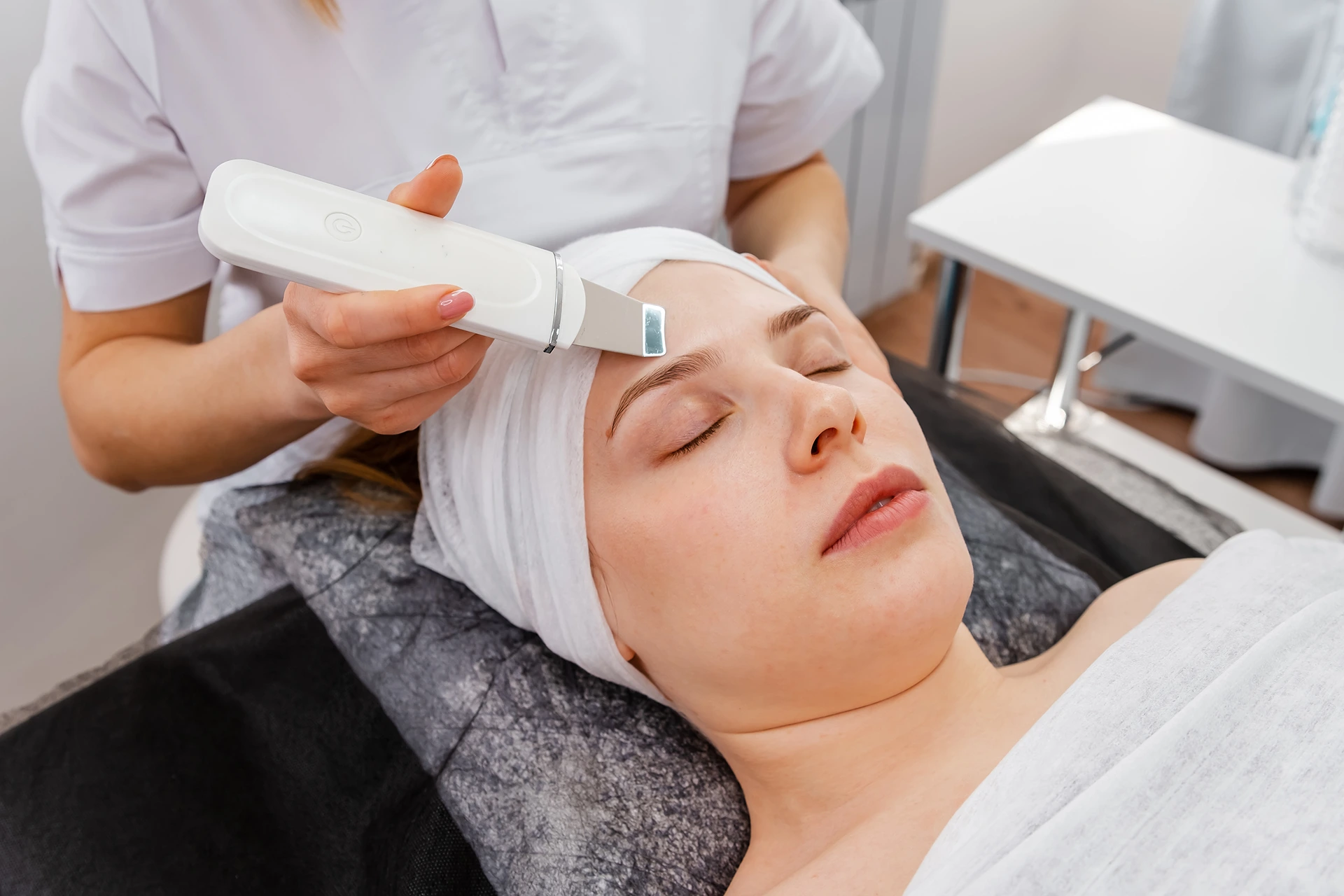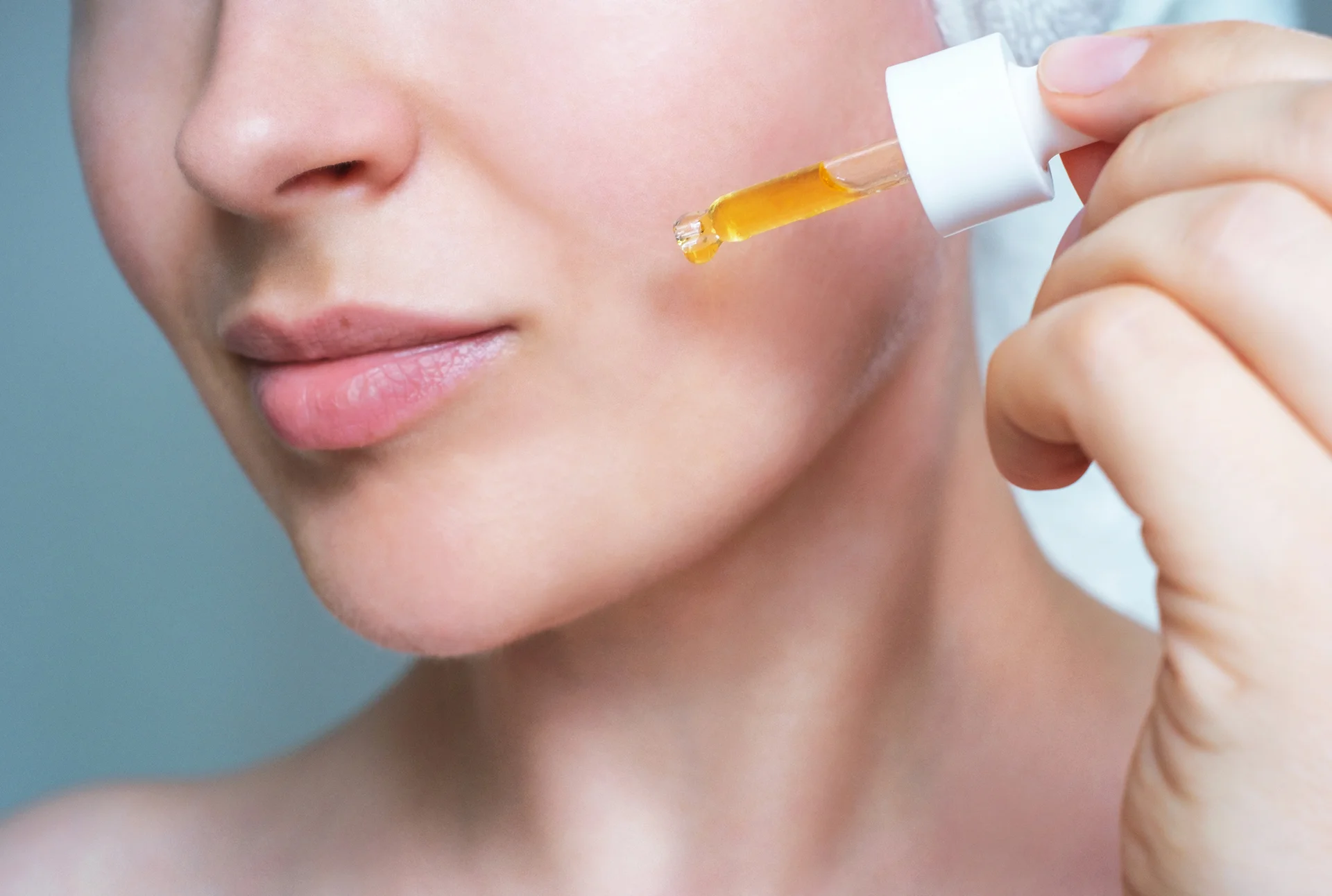Everything You Need to Know
Here at CosMedic Laser MD, we understand that sensitive skin requires special care and consideration for any cosmetic procedure or treatment.
As experts in minimally invasive techniques, Dr. Deepa Macha and her medical team are highly experienced in caring for patients with reactive and easily irritated complexions.
In this blog post, we’ll provide a complete overview of dermaplaning, including how it can benefit those with sensitive skin when performed correctly by a skilled professional like Dr. Macha. We’ll also share best practices for pre- and post-treatment skincare to ensure the best possible results.
What is Dermaplaning?
Dermaplaning is a simple, safe procedure that uses a sterile, surgical scalpel to gently shave off the top layer of dead skin cells and vellus hair (peach fuzz) from the face. It is a manual form of light exfoliation that reveals smoother, brighter skin underneath.
During a dermaplaning treatment, Dr. Macha uses precise techniques to slide the scalpel at a 45 degree angle across the skin’s surface, removing built-up dead cells and fine facial hair. This stimulates cellular turnover and collagen production for refreshed, rejuvenated skin.
The Benefits of Dermaplaning
- Exfoliates without harsh chemicals that can irritate
- De-fuzzes for a smooth, hair-free complexion
- Evens skin texture and tone for a glowing effect
- Allows better absorption of skincare products
- Removes dirt, oil and impurities from pores
- Prepares skin for deeper chemical peels if desired
- Safe for all skin types when done properly
Is Dermaplaning Suitable for Sensitive Skin?
Dermaplaning is highly compatible with easily-irritated, sensitive skin when performed by an expert like Dr. Macha. The light manual exfoliation is free of abrasive scrubs or acidic solutions that can cause inflammation.
By removing the top layer of dead cells and peach fuzz, dermaplaning allows skincare products to better penetrate the skin. This enables effective nourishing and hydration of the newly revealed smooth complexion.
Dermaplaning is also far gentler than harsh chemical peels, which can burn and cause damage in sensitive skin. The precise control of a surgical blade minimizes irritation that scrubbing or chemicals may cause.
However, those with highly reactive skin conditions like rosacea should still consult Dr. Macha before treatment. She will assess skin health and determine if dermaplaning is suitable or if modifications are required.
How does dermaplaning improve sensitive skin?
Dermaplaning gently exfoliates the top layer of dead cells and peach fuzz to reveal smoother, brighter skin without aggravating sensitivity. It allows better absorption of hydrating skincare products as well.
How often can I get dermaplaning treatments for my sensitive skin?
For highly reactive skin, Dr. Macha recommends dermaplaning no more than every 4-6 weeks to allow the protective barrier to fully recover between sessions. More resilient skin may tolerate monthly treatments.
What results can I expect from dermaplaning if I have sensitive skin?
You can expect smoother texture, reduced peach fuzz, brighter tone, unclogged pores, and better absorption of skincare products. Results are milder but still visible in sensitive skin when properly performed.
Dermaplaning Technique for Sensitive Skin

Dr. Macha employs a specialized technique when dermaplaning sensitive complexions to prevent irritation and discomfort:
- Careful evaluation of skin health beforehand
- Use of sterile, surgical-grade scalpel for precision
- Light pressure applied to the scalpel for gradual exfoliation
- Slow, uniform strokes in direction of hair growth
- Avoiding areas of inflammation or broken skin
- Applying soothing gel or serum during treatment
- Checking for discomfort and adjusting technique as needed
With an expert touch and the proper instruments, dermaplaning can be accomplished without redness or irritation in most sensitive skin types.
Are there any alternatives to dermaplaning for sensitive skin?
Less invasive options like chemical exfoliating pads, enzymatic peels, or microdermabrasion may suit sensitive skin better. Consult Dr. Macha to determine which facial rejuvenation treatment is right for you.
Before Dermaplaning Treatment: Preparing Sensitive Skin
To minimize sensitivity during dermaplaning, Dr. Macha advises patients take these steps to prep skin beforehand:
- Avoid irritating actives like retinol, benzoyl peroxide, AHAs, and vitamin C for 1 week prior
- Hydrate skin well by drinking water and applying emollient moisturizers
- Use gentle cleansers free of fragrances, dyes and harsh surfactants
- Do not wax, thread or use depilatory creams on the face for 5-7 days before
- Apply hydrocortisone cream to any inflamed acne or abrasions
- Avoid sun exposure to prevent burning sensitive skin
Starting dermaplaning with a calm, nourished complexion minimizes discomfort and allows for better results.
After Dermaplaning Treatment: Caring for Sensitive Skin
Proper aftercare is also crucial to avoiding reactions and irritation following dermaplaning. Dr. Macha provides these post-treatment recommendations:
- Cleanse very gently and pat dry, do not rub
- Apply antioxidant serums and lightweight moisturizers
- Avoid retinoids, benzoyl peroxide, vitamin C and acids for 3-5 days
- Stay out of the sun and use broad spectrum SPF 30+ sunscreen
- Do not have waxing, facials or chemical peels for one week
- Use cool compresses if skin feels heated or uncomfortable
- Return for any signs of infection or excessive redness
With diligent skincare and sun protection, dermaplaning after-effects stay minimal for sensitive complexions.
Dermaplaning Frequency for Sensitive Skin
Those with highly reactive skin should not dermaplane too often to prevent sensitivity. Dr. Macha suggests every 4-6 weeks for sensitive patients.
Book a consult so she can evaluate your skin and determine the ideal frequency to maintain results without irritation. More resilient skin may tolerate monthly treatments.
Less frequent dermaplaning allows sufficient time between sessions for the stratum corneum barrier to fully recover. Rushing exfoliation can disrupt this protective layer and worsen inflammation in delicate skin.
Safe Dermaplaning at Home?
Dr. Macha does NOT recommend attempting dermaplaning at home if you have reactive, acne-prone or easily irritated skin.
The improper technique and insufficient infection control measures of DIY dermaplaning can lead to cuts, nicks, breakouts, redness and even permanent scarring in sensitive complexions. It is safest to have the procedure performed in a controlled clinical environment instead.
During your personalized consultation, Dr. Macha can provide guidance on properly caring for your sensitive skin at home between dermaplaning sessions instead. This ensures you achieve the best possible results safely.
Give Your Skin the Care it Deserves
Dermaplaning can unlock smooth, radiant and touchably soft sensitive skin when performed at the right frequency by an expert like Dr. Macha. Together with a customized skincare regimen for your skin type, beautiful yet gentle outcomes are possible.
Book a private consultation today to learn more about how dermaplaning and other non-invasive treatments can benefit your unique cosmetic needs and goals. Dr. Macha looks forward to meeting you!
FAQs About Dermaplaning for Sensitive Skin

What precautions should I take before dermaplaning my sensitive skin?
Avoid irritating ingredients like retinol, AHAs, and vitamin C for 1 week beforehand. Hydrate skin well and use only gentle cleansers. Do not wax or thread the face for 5-7 days prior either.
Is it safe to do dermaplaning at home if I have sensitive skin?
No, Dr. Macha does not recommend DIY dermaplaning for sensitive skin due to the risks of improper technique, infection and scarring. It is safest performed by a trained professional in a clinical setting.
What aftercare is needed following dermaplaning for sensitive skin?
Gently cleanse and hydrate skin. Avoid retinoids, acids, and vitamin C for 3-5 days. Protect skin with SPF 30+ sunscreen. Do not wax, have facials or chemical peels for one week afterwards.
Can dermaplaning cause breakouts or irritation in sensitive skin?
When performed correctly, dermaplaning is gentle and should not cause complications for most. But those with highly reactive conditions like rosacea should consult a dermatologist first to evaluate risks.
How does Dr. Macha’s dermaplaning technique cater to sensitive skin?
She uses a light touch, sterile scalpel, soothing gels, and slow uniform strokes in the direction of hair growth. Dr. Macha checks for discomfort and adjusts her approach for a calm, irritation-free treatment.
Is numbing cream needed for dermaplaning sensitive skin?
Typically numbing cream is not required as dermaplaning should not cause significant pain if done correctly. But Dr. Macha can provide a topical anesthetic beforehand if your skin is highly reactive.







